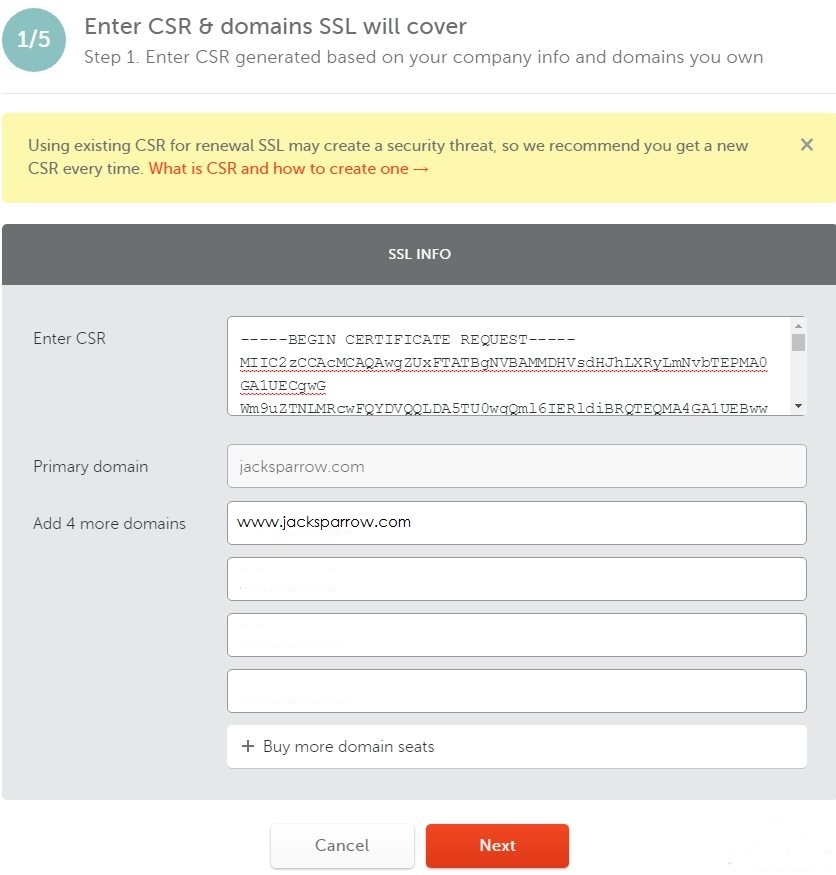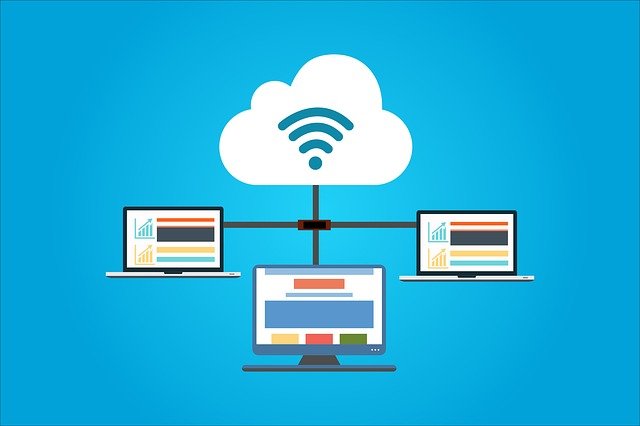
A web application can be divided into client-side and server-side operations. Client-side operations run on the client, while server-side operations run on the server. The way that the server handles inputs or outputs is what differentiates them. The server-side of a web application can process large amounts of data while maintaining a high degree of security.
Client-side
Client-side rendering is one the best ways to present dynamic content. It allows you to prepopulate web pages with custom data. This reduces server load. However, it adds milliseconds or even seconds to the page load time. In contrast, server-side rendering relies on the server to generate a page.
In the past almost all business logic was executed on the server. This included rendering dynamic webpages, interacting with databases, push notifications, and identity authentication. This introduced high latency to the application. In order to decrease latency, applications now run more code from the client side.

Frontend
Frontend server is responsible for user interaction. The device that interacts the website with, such as a browser and a mobile telephone, is called the client. The "client side" encompasses everything displayed on the site and all processes performed on it. This world is vastly different from the "server side" web development.
Frontend developers are the developers who code the look and feel of a web application. These developers interpret backend data and create user-friendly formats. They use a markup language such as HTML and CSS to develop the look and feel of a site.
Streaming
Streaming server-side benefits both developers and users. The cloud takes the processing load off the client device and makes the application more responsive. This improves the customer experience. It also allows for changes to be made to an application without having to update the client. This is good for both users and developers, since many users don't like the idea of having to update their app.
Client-side streaming comes with the disadvantage that users may install ad blockers to impede users from accessing important data such coupons and special offers. For websites that are required to transmit such data, client-side stream is not an option. These websites should consider streaming server side instead.

Storage
Server-side data storage architectures are a newly emerging category. These storage media can be stored in servers and remove the complexity and costs associated with dedicated storage arrays. Server-based storage technologies include simple SAN-replacement appliances as well as more complex software-defined storage products. There are however some disadvantages to server-side data storage architectures.
Storage server architectures aim to address several concerns, such as cost, scalability security, administration and ease. Today's dynamic computing environment demands an increased level of design sophistication. Server-side storage architectures need to be compatible with new technology. Servers can be equipped with advanced load balancing and queuing theories to maximize performance.
FAQ
What is Website Design Software?
Graphic artists, photographers, illustrators, and writers use website design software to create websites and other digital media.
There are two main types for website design software. Desktop apps are downloaded to your computer locally and you will need additional software. Cloud-based solutions can be hosted remotely over the internet. They are ideal for mobile users as they don't require additional software.
Desktop Applications
Although desktop apps offer more features than cloud-based applications, they are not always required. Some people prefer to work only from a desktop application because it is more convenient. Others prefer the same tool, no matter if they are using it on a mobile device or a laptop.
Cloud-Based Solutions
Web designers who want to save time and money should choose a cloud-based solution. These services let you edit any type or document anywhere you have an internet connection. This means you can work on a tablet while waiting for your coffee to brew.
If you decide to go with a cloud-based service, you'll still need to purchase a license for the program. However, additional licenses are not required to upgrade to a newer version.
These programs can be used to create web pages, if you have Photoshop, InDesign or Illustrator.
Can I create my own website with HTML & CSS?
Yes! If you've been following along so far, you should now understand how to start creating a website.
Now that you are familiar with how to create a website's structure, you will also need to be familiar with HTML and CSS programming.
HTML stands for HyperText Markup Language. Think of it like writing a recipe for a dish. It would list the ingredients, directions, and how to do it. Similarly, HTML tells a computer which parts of text appear bold, italicized, underlined, or linked to another part of the document. It's the language of documents.
CSS stands for Cascading Style Sheets. It's like a stylesheet for recipes. Instead of listing out each ingredient and instruction, you write down general rules for things like font sizes, colors, spacing, and more.
HTML tells the browser how to format a web page; CSS tells it how to do it.
You don't have to be a prodigy if you don’t get the terms. Follow these tutorials, and you'll soon have beautiful websites.
Can I use a framework or template on my website?
Yes! Many people use pre-built templates or frameworks when creating a website. These templates contain all the code that is required to display information.
Some of the most well-known templates are:
WordPress - One of the most used CMSes
Joomla - another popular open source CMS
Drupal - an enterprise-level solution that large organizations use
Expression Engine - Yahoo's proprietary CMS
Hundreds of templates are available for each platform, so finding the right one should be easy.
What is a UI designer?
The interface design team for software products is called a user interface (UI). They are responsible for the design of the layout and visual elements in an application. Sometimes, the UI designer might also include graphic artists.
The UI Designer should be able to identify problems and solve them.
A UI designer must have a passion about technology and software design. From developing ideas to implementing them into code, a UI designer must be able to comprehend all aspects of the field.
They should be able create designs with various tools and techniques. They should be able to think creatively and solve problems by creating innovative solutions.
They must be organized and detail-oriented. They should be able to develop prototypes quickly and efficiently.
They should feel comfortable working with clients large and small. They should be able, and willing, to adapt in different environments and situations.
They must be able communicate with others effectively. They should be able to express their thoughts clearly and concisely.
They should be well-rounded and possess strong communication abilities.
They must be driven and motivated.
They should be passionate and dedicated to their craft.
What Should I Include in My Portfolio?
Your portfolio should consist of all these things:
-
Exemplaires of previous work
-
If possible, links to your site
-
Links to your blog.
-
These links will take you to social media websites.
-
Here are links to portfolios online of other designers.
-
Any awards you have been given.
-
References.
-
Samples of your work.
-
Here are some links that will show you how to communicate with your clients.
-
Links showing you're willing to learn new technologies.
-
Here are some links to show you are flexible.
-
These links show your personality.
-
Videos showing your skills.
How do I create a free website?
It depends on what type of website you want to create. Do you want to sell online products, start a blog, build a portfolio, or both?
It is possible to create a basic website with HTML and CSS (a combination HyperText Markup Language & Cascading Style sheetss). You can create a simple website with HTML and CSS. But most web developers recommend using a WYSIWYG editor (such as Dreamweaver, Frontpage).
A freelance developer may be the best choice if you don't have any experience in designing websites. They can help you build a website customized to your needs.
Freelancers can charge a flat fee or an hourly rate. The price of hiring a freelancer will vary depending on how much work is completed within a specified timeframe.
For example, you might pay $50-$100 an hour to a company. For larger projects, rates are usually higher.
In addition, many freelance websites list available jobs. You can also search on those websites before you reach out to developers.
Statistics
- In fact, according to Color Matters, a signature color can boost brand recognition by 80%. There's a lot of psychology behind people's perception of color, so it's important to understand how it's used with your industry. (websitebuilderexpert.com)
- At this point, it's important to note that just because a web trend is current, it doesn't mean it's necessarily right for you.48% of people cite design as the most important factor of a website, (websitebuilderexpert.com)
- It enables you to sell your music directly on your website and keep 100% of the profits. (wix.com)
- When choosing your website color scheme, a general rule is to limit yourself to three shades: one primary color (60% of the mix), one secondary color (30%), and one accent color (10%). (wix.com)
- Studies show that 77% of satisfied customers will recommend your business or service to a friend after having a positive experience. (wix.com)
External Links
How To
How to use WordPress for Web Design
WordPress is a free software program that can be used to create websites and blogs. WordPress' main features include an easy installation, powerful theme options and plug-ins. This website builder lets you customize your site to suit your preferences. You can choose from hundreds of themes or plugins to make your site unique. You can also add your domain to the site. All these tools enable you to manage your site's appearance and functionality effortlessly.
WordPress is a powerful tool that allows you to create stunning websites without having to know HTML code. It doesn't matter if you don’t know much about coding. You can create a beautiful website in no time. This tutorial will show you how to install WordPress and walk you through the basic steps to create your blog. We'll explain everything so you can follow along at home.
WordPress.com is the most widely used Content Management System (CMS) and currently has 25 million users around the world. You have two options for WordPress: you can either purchase a license for $29 per monthly or download the source code to host it free of charge.
WordPress is often chosen for its blogging platform because of many factors. One reason is that WordPress is extremely easy to use. Anyone with a basic knowledge of HTML can create a stunning site. Its flexibility is another advantage. Many themes are free on WordPress.org, meaning you can change the look and feel of your site entirely without having to pay a penny. You can also customize it. Developers offer premium add-ons which allow you to update posts automatically when someone comments or integrate social media sharing within your site.